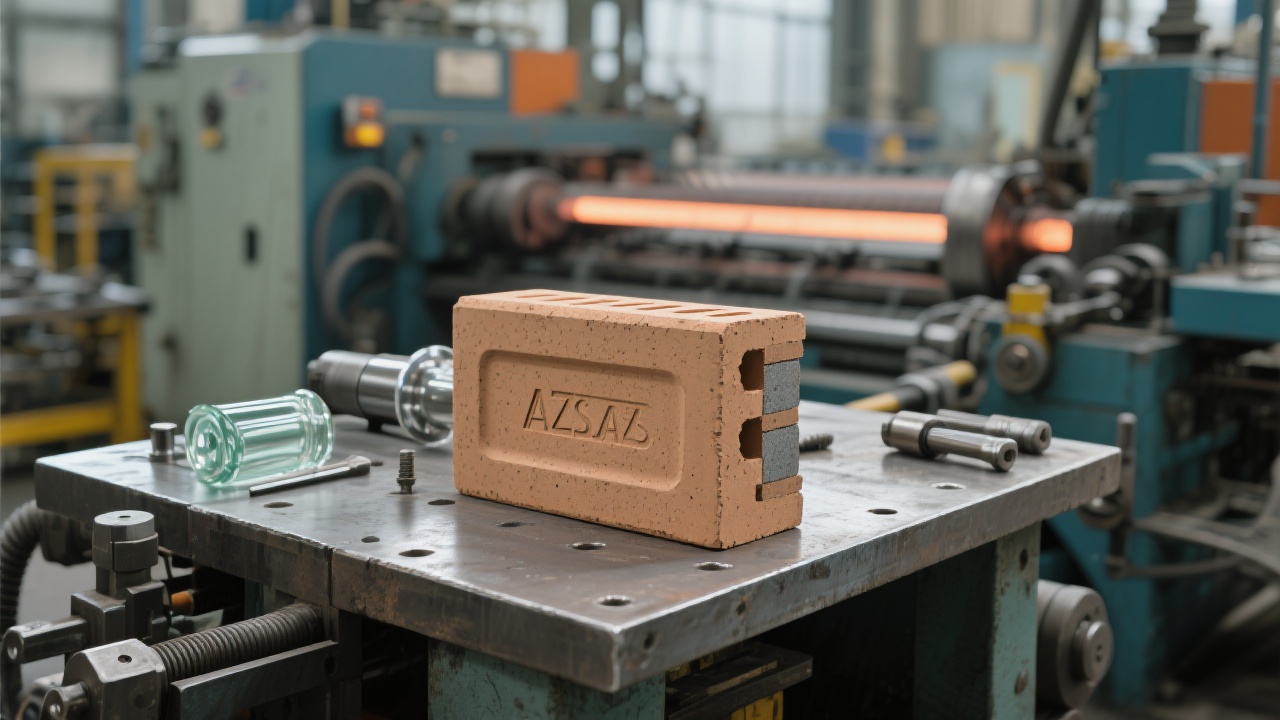
In the glass melting industry, operators often face severe challenges such as serious corrosion in glass furnaces, frequent shutdowns, and high maintenance costs. These issues not only affect production efficiency but also significantly increase production costs. Therefore, choosing the right refractory materials is crucial for the long - term and stable operation of glass furnaces.
AZS33# block is an electro - fused zirconia corundum brick with a unique raw material ratio of Al₂O₃ - ZrO₂ - SiO₂. This specific ratio allows it to form a dense microstructure during the electro - fusion process. The high - temperature electro - fusion process ensures that the various components in the block are fully fused, resulting in high density and excellent high - temperature stability. In contrast, traditional mullite and high - alumina bricks have relatively loose microstructures due to their production processes, which makes them less resistant to high - temperature corrosion and thermal shock.
In the feeding channel, the glass liquid has a high flow rate and contains a certain amount of corrosive substances. The dense structure of AZS33# block can effectively resist the erosion of the glass liquid. It can prevent the glass liquid from penetrating into the brick body, thereby reducing the damage to the refractory material and ensuring the smooth flow of the feeding channel. On the other hand, traditional mullite and high - alumina bricks are more likely to be eroded in this environment, which may lead to blockage of the feeding channel and affect the normal production process.

The trough bottom is in direct contact with the high - temperature glass liquid for a long time. AZS33# block shows excellent corrosion resistance here. Its high - temperature stability allows it to maintain its structural integrity under high - temperature conditions, reducing the risk of cracking and peeling. Traditional refractory materials, however, may experience significant deformation and corrosion at the trough bottom, which requires frequent replacement and increases maintenance costs.
In the C - shaped brick area, the temperature and stress distribution are relatively complex. AZS33# block can withstand the combined effects of high temperature and stress due to its high strength and good thermal shock stability. It can maintain its shape and performance in this complex environment, while traditional mullite and high - alumina bricks may crack or break under the action of thermal stress, affecting the overall performance of the furnace.
At the hopper top, there is a certain amount of dust and corrosive gas. The dense surface of AZS33# block can prevent the penetration of these substances, protecting the refractory material from corrosion. Traditional refractory materials are more likely to be corroded by these substances, leading to a reduction in their service life.
Through laboratory tests, we can clearly see the performance differences between AZS33# block and traditional mullite and high - alumina bricks. The following table shows some key performance data:
| Refractory Material | Linear Change Rate | Flexural Strength (MPa) | Erosion Rate |
|---|---|---|---|
| AZS33# Block | ≤0.5% | ≥12 | Only 1/3 of Mullite |
| Traditional Mullite | ≥1% | ≤8 | Relatively High |
| Traditional High - Alumina Brick | ≥1.2% | ≤6 | Relatively High |
From the data in the table, it can be seen that AZS33# block has obvious advantages in linear change rate, flexural strength, and erosion resistance.
According to the relevant industry standard GB/T 26748, AZS33# block meets the strict requirements for refractory materials in glass furnaces. Many experts in the industry also believe that AZS33# block is the preferred refractory material for the upper structure of glass furnaces. Its excellent performance can effectively reduce the frequency of furnace shutdowns and maintenance costs, and improve the reliability of furnace operation.
"The use of AZS33# block in glass furnaces is a significant improvement in refractory technology. Its high - density structure and excellent corrosion resistance can bring long - term benefits to glass production enterprises." - Industry Expert
In conclusion, choosing AZS33# block means reducing furnace shutdown losses and extending the service life of the furnace. If you are an engineer, procurement manager, or project leader in the glass melting industry, don't miss this high - performance refractory material. Click here to learn more about AZS33# block.
Do you have any experience or questions about refractory materials for glass furnaces? Share your thoughts in the comments below!

